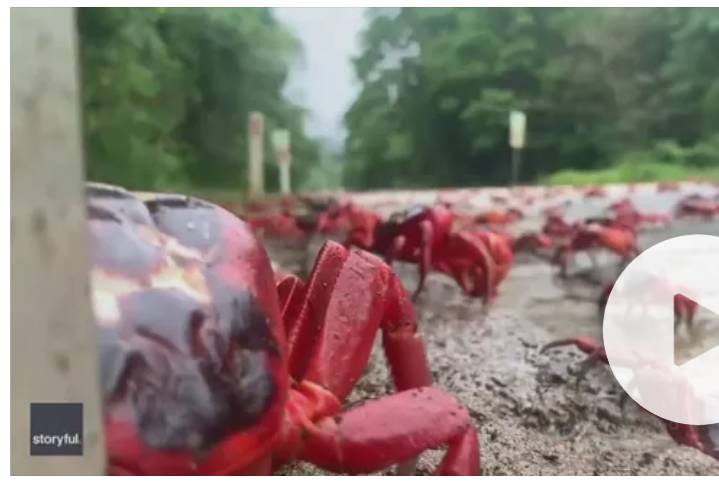Exploring Christmas Island National Park: Witness the Spectacle of the Annual Red Crab Migration
Nestled in the Indian Ocean, Christmas Island National Park is a pristine paradise renowned for its unique natural wonders and abundant wildlife. Among its most awe-inspiring phenomena is the annual migration of millions of red crabs—a vibrant display of nature’s rhythm that transforms the island into a living, crawling tapestry of red. Every year, visitors from around the world flock to witness this extraordinary event, a true testament to the island's ecological uniqueness.
The Migration Phenomenon
The annual red crab migration is a synchronized journey that occurs between October and January, triggered by the first significant rains of the wet season. Over 50 million bright red crabs leave their forest burrows, embarking on a journey to the ocean to breed and spawn. This epic migration is an essential part of their lifecycle and the island's ecosystem.
The migration route covers vast distances, with crabs traversing rugged terrain, dense forests, and even crossing busy roads. The crabs’ determination is unmatched, with some climbing walls and fences to stay on course. Local authorities play a crucial role in ensuring their safe passage, closing roads and setting up crab bridges and tunnels to minimize human impact on this delicate process.
When to Visit
The exact timing of the migration varies annually, depending on the onset of the wet season and the lunar calendar. To witness this natural marvel, it's best to monitor updates from the Christmas Island National Park authorities, who provide real-time information on the crabs' movements. The migration usually peaks around November or December, making it an ideal time for a Christmas holiday visit.
What to Expect
As the crabs make their way to the shoreline, they create a spectacle that is nothing short of mesmerizing. Roads, trails, and beaches become a sea of red, with crabs scuttling in unison. The culmination of the migration occurs when female crabs release their eggs into the ocean under the cover of darkness, coinciding with high tides. This moment is magical, as millions of tiny larvae illuminate the water, signaling the start of a new life cycle.
Exploring Beyond the Migration
While the red crab migration is the star attraction, Christmas Island National Park offers a plethora of other activities for nature enthusiasts. The park is home to lush rainforests, vibrant coral reefs, and diverse wildlife, including rare bird species and the iconic blue crabs. Hiking trails, snorkeling, and diving opportunities abound, providing a comprehensive experience of the island’s natural beauty.
Sustainable Tourism Practices
To preserve the delicate balance of Christmas Island’s ecosystem, visitors are encouraged to respect park guidelines. Avoid disturbing the crabs, stick to designated trails, and support local conservation efforts. Sustainable tourism ensures that future generations can continue to marvel at this incredible phenomenon.
Plan Your Visit
Getting to Christmas Island is an adventure in itself. The island is accessible via flights from Perth, Australia, or Kuala Lumpur, Malaysia. Accommodation ranges from eco-lodges to family-friendly resorts, ensuring a comfortable stay. Guided tours led by local experts are highly recommended for an in-depth understanding of the island’s ecology and culture.
Conclusion
Christmas Island National Park is a destination like no other, offering an unparalleled opportunity to witness one of nature’s greatest migrations. The annual red crab migration is not just a visual spectacle but a reminder of the intricate connections within our natural world. Whether you’re a wildlife enthusiast, a nature photographer, or simply a traveler in search of wonder, this island promises an unforgettable experience.
Pack your bags, book your tickets, and get ready to be swept away by the charm of Christmas Island National Park and its captivating red crab migration.


